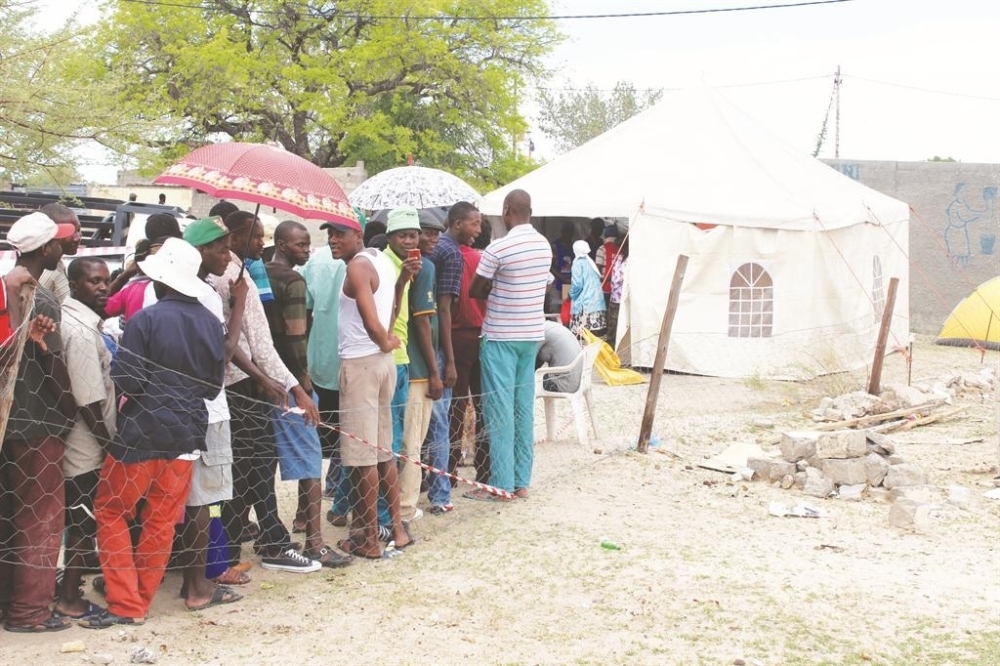Six million Namibians projected by 2050
Preliminary census results ‘surprising’
The Namibia Statistics Agency this week announced a population growth of 114% over the last 32 years.
Namibia’s population is expected to reach six million by 2050, an assessment by Cirrus Capital has found.
This follows the release of the preliminary census statistics this week by the Namibia Statistics Agency (NSA), which now places the population at just over three million, and which marks a population growth of 114% over the last 32 years.
If all other factors remain constant, the population will grow substantially as the world approaches the halfway mark of this century, Cirrus said.
“Namibia’s de facto population on the census reference night, 24 September 2023, was 3 022 401. In 2011, the total population was 2 113 077 – meaning a 43% increase from 2011 to 2023. This translates to an inter-censal annual growth rate of 3%, accelerating from 14% between 2001 and 2011. At this rate, ceteris paribus, the total population growth is estimated to be over six million by 2050,” the company noted.
Windhoek, Rundu most populous
The latest census results also found that Khomas remained the most populous region with a total population of 494 605 - up from 342 141 in 2011, accounting for 44.6% increase. This trend was also observable in the total population for Windhoek, which stands at 486 169, accounting for 98.2% of the region’s residents.
In terms of rank, Rundu follows in second place with a total count of 118 625, followed by Walvis Bay with 102 704, Swakopmund with 75 921 and Oshakati with 58 696.
Cirrus noted that Otjiwarongo’s population witnessed a growth of 73.5%, making it the sixth largest local authority area.
“Okahandja was the fastest growing urban locality, with population up by 99.5%,” Cirrus said.
What do the numbers mean?
In its analysis, Cirrus said while the preliminary census results provided limited data, they did indicate typical development trends such as rapidly increasing urbanisation. Preliminary results indicated that Namibia’s urbanisation growth rate stood at 63%.
“While unemployment data has not yet been made available, the higher-than-expected population growth rate highlights the challenge of creating jobs faster as there are new entrants to the labour force.”
Academic Dr Omu Kakujaha-Matundu called Namibia’s population growth surprising. “From the projections of the 2011 census and the number that came out, the growth is surprising. One wonders whether it is in migration or natural growth,” he said.
Economic Association of Namibia CEO Cons Karamata also expected a much lower head count.
“I was surprised that we hit the three million mark. Based on projections, I expected the population size to be closer to 2.7 million,” he said.
This follows the release of the preliminary census statistics this week by the Namibia Statistics Agency (NSA), which now places the population at just over three million, and which marks a population growth of 114% over the last 32 years.
If all other factors remain constant, the population will grow substantially as the world approaches the halfway mark of this century, Cirrus said.
“Namibia’s de facto population on the census reference night, 24 September 2023, was 3 022 401. In 2011, the total population was 2 113 077 – meaning a 43% increase from 2011 to 2023. This translates to an inter-censal annual growth rate of 3%, accelerating from 14% between 2001 and 2011. At this rate, ceteris paribus, the total population growth is estimated to be over six million by 2050,” the company noted.
Windhoek, Rundu most populous
The latest census results also found that Khomas remained the most populous region with a total population of 494 605 - up from 342 141 in 2011, accounting for 44.6% increase. This trend was also observable in the total population for Windhoek, which stands at 486 169, accounting for 98.2% of the region’s residents.
In terms of rank, Rundu follows in second place with a total count of 118 625, followed by Walvis Bay with 102 704, Swakopmund with 75 921 and Oshakati with 58 696.
Cirrus noted that Otjiwarongo’s population witnessed a growth of 73.5%, making it the sixth largest local authority area.
“Okahandja was the fastest growing urban locality, with population up by 99.5%,” Cirrus said.
What do the numbers mean?
In its analysis, Cirrus said while the preliminary census results provided limited data, they did indicate typical development trends such as rapidly increasing urbanisation. Preliminary results indicated that Namibia’s urbanisation growth rate stood at 63%.
“While unemployment data has not yet been made available, the higher-than-expected population growth rate highlights the challenge of creating jobs faster as there are new entrants to the labour force.”
Academic Dr Omu Kakujaha-Matundu called Namibia’s population growth surprising. “From the projections of the 2011 census and the number that came out, the growth is surprising. One wonders whether it is in migration or natural growth,” he said.
Economic Association of Namibia CEO Cons Karamata also expected a much lower head count.
“I was surprised that we hit the three million mark. Based on projections, I expected the population size to be closer to 2.7 million,” he said.





Comments
Namibian Sun
No comments have been left on this article